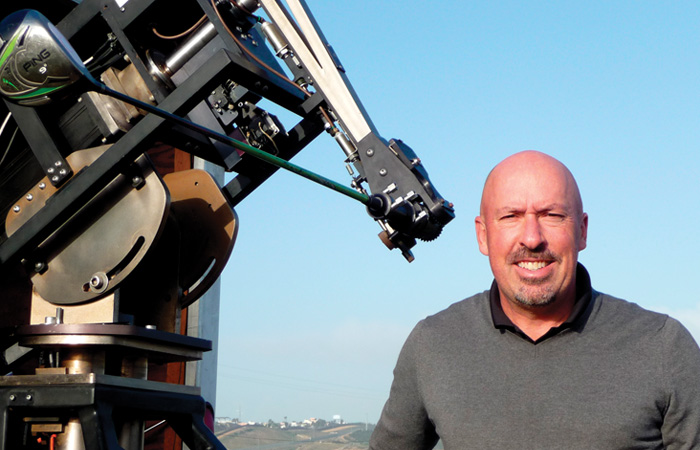It has always been said that less-skilled golfers come over the top (OTT) while the best golfers, especially the professionals, never do. However, when asked for a tip to avoid over the top, many pros at the recent Farmers Insurance Open at Torrey Pines said they are sometimes OTT, too.
For some, like Michael Herrera, for whom the Farmers’ Insurance was his first PGA TOUR event, a simple tip would be to move the ball further back in the stance. He himself thinks of the movement he needs to make to avoid over the top during his takeaway, as there is no time during the downswing to think. He tells himself that once he gets to the top, he should have his body go first and then his hands.
Harris English also had a simple tip for golfers to try while practicing. They should place the logo of the ball so that the trail side of the logo (or arrow, as many balls have these days) is inside the target line and the lead side of the logo outside the target line. Then a golfer should think of connecting with the inside right (for a right-handed golfer) corner of the ball and that would result in a natural in-to-out downswing. When he himself needs to avoid an OTT downswing, he feels his takeaway has to start in the correct direction, neither too far out or too far in.
Nick Watney also believed, like English, that it is some part of the backswing that matters. When asked whether he comes over the top, he said, “I’m sure I do. My thing is I usually do the opposite, so I don’t really think about that, to be honest.” For that reason, he does not have a downswing thought and says, “I think the downswing is all created by the backswing.”

Another simple yet useful tip was provided by Mark Blackburn, instructor to many of the leading golfers today, including Max Homa, who won the Farmers Insurance this year. He said that while everyone is different, OTT is more of a lower body issue than an upper body one and happens because amateurs do not use the lower body. If golfers do have the ability to move the lower body efficiently, a good thought would be to imagine the back stays to the target longer, so the lower body has time to start down.
One golfer literally echoed Blackburn’s words when he (Taylor Montgomery) said, “I try to hit a hook.” He places his shoulders a bit more closed, as it allows him to swing from in-to-out.
When asked whether he ever comes over the top, PGA TOUR rookie Nicholas Echavarria answered, “Typically, when the tempo is a little quick and it goes too fast, I tend to be over the top, so I slow it down in transition.” He added that this solution works well for him.
Yet another simple solution was offered by Martin Trainer. When asked whether he is ever over the top, he laughed and replied, “Yes, all the time.” He believes it happens because he turns his shoulders too quickly from the top. His simple trick is to stay back with his head, which allows his club to drop inside so he can hit more of a draw. He almost feels that his head moves toward his right (he is right-handed) as he moves from the top.

Another similar solution is used by Kevin Roy. He does sometimes get OTT and he tries to shallow the club, because his typical tendency is to lean left (he is right-handed, too) a bit and then the club gets stuck. In the downswing, he likes to feel that is getting more behind the ball and letting the club fall to his side (i.e., behind him).
Not every solution for avoiding OTT was a simple one. For instance, Doug Ghim said that “Going over the top means the right shoulder is too high, so if you can focus on your right shoulder being lower than your left, then typically it gets rid of it.” He added, “If you try to shift your lower body toward the target as your first move down and try to get your left shoulder higher than your right, you’ll avoid OTT.”
Finally, Dylan Wu is quite au courant with the latest ideas in golf swing theories. The main downswing movement to prevent an OTT move, according to him, is to “shallow the club.” According to Wu, “It is the big thing in instruction these days, and you see a lot of golf swings where people have the right (trail) arm close to the body in transition to get rid of OTT.” The right arm should touch the hip and the golfer should get a feel of the arms dropping down behind. However, he also has a simple tip to offer and suggests that people who slice should aim right and swing to first base (as in baseball), so they’re playing more “underneath” and not over.
To sum up, any golfer who wishes to avoid an OTT downswing can use a simple trick like positioning the ball further back in the stance or positioning the ball’s logo so that it’s easy to see the right inside of the ball. Keeping the back to target, in other words having closed shoulders can help, too, as can keeping the head or the body behind the ball. Shifting (to the lead side) followed by lifting (of the lead shoulder) is yet another pro tip, while some might suggest that the trail upper arm should drop close to the trail side during transition. Pick the solution that works best for you.